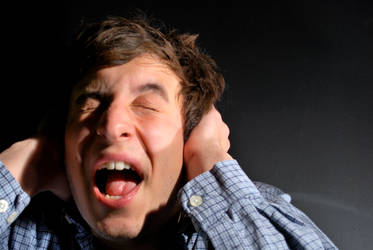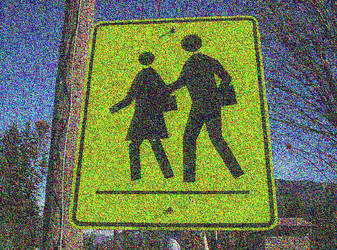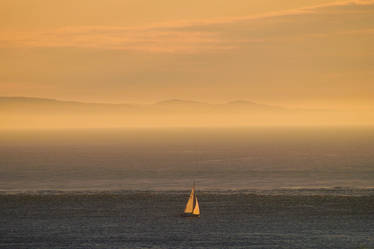"I would love to figure out how to reduce the noise on my camera.
I'd love to drop kick it off of a very high cliff, but then I wouldn't
have a camera at all. It may just be because the camera is a POS
though..." ~CelticStrm-Stock
"Noise is a characteristic that can be mitigated with numerous techniques.
Noise is all about how much light a camera can capture above its inherent noise floor (the natural noise that the sensor and electronics will always make regardless of what you do), the more 'signal' there is above the noise floor, the less visible the noise will be.
Based on the EXIF information on your images, you have a compact camera, with a 1/2.5" sensor. Smaller sensors will, invariably, produce noisier results than larger sensors with the same number of pixels, within the same sensor generation (obviously, each generation made sensor manufacturers apply more and more ways to bend the laws of physics to make their sensors perform better).
Fortunately, you have some pluses on your side, your camera has access to manual exposure modes.
Reducing noise requires using the lowest ISO available (commonly referred to the base ISO), the widest aperture (the smallest F number, so say F/4 is physically larger than F/5.6), and the longest appropriate shutter speed.
The shutter speed might pose a sticking point as it might push the exposure time to seconds in length for even a moderately well lit scene, so you can either get a tripod, or if that's not practical you'll have to make the compromise of higher noise in getting the shot.
If carrying a tripod is fine and good, you may also want to 'Expose to the Right'.
Nearly every camera with Manual Exposure options has the ability to display a histogram of the image.
A histogram, if you didn't know, is a bar graph plotting out the number of pixels at each brightness level (unless the camera can shoot RAW, which yours cannot, unless you use CHDKthere are 256 possible levels for you).
Exposing to the Right makes the image as high key as possible without over-blowing the highlights of the image, the point is to make the image as bright as possible, in other words, the histogram will be heavily weighted to the right side.
When you get this exposed to the right image, you'll, naturally, have to correct the exposure in post processing, this will have the effect of reducing the noise in the shadows, while also making the image not blindingly bright.
There are some disadvantages of course, most especially if you're shooting in JPEG, but if noise is a primary concern, then this is a good place to start." ~ sine-out




